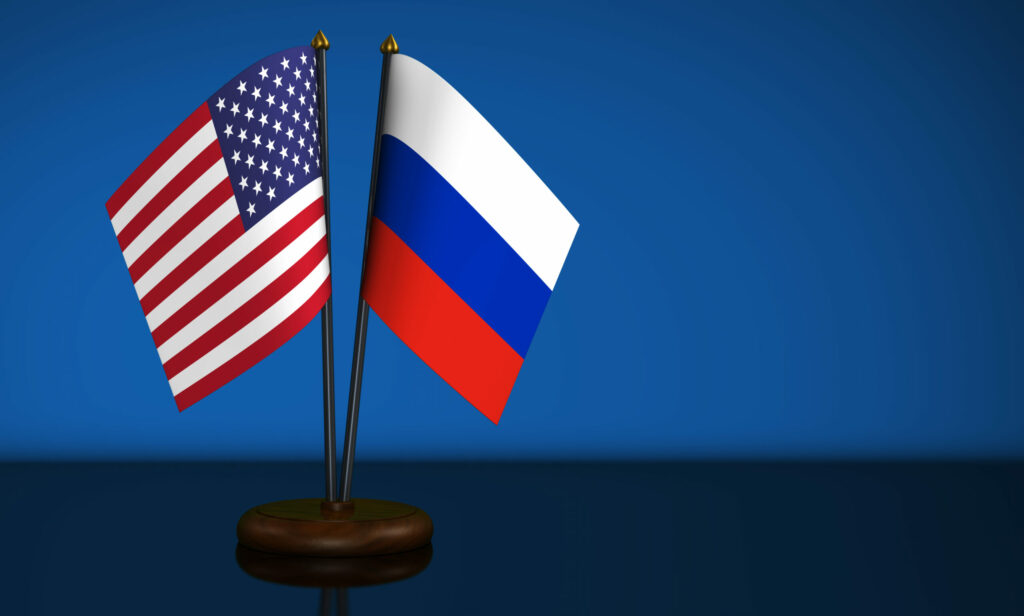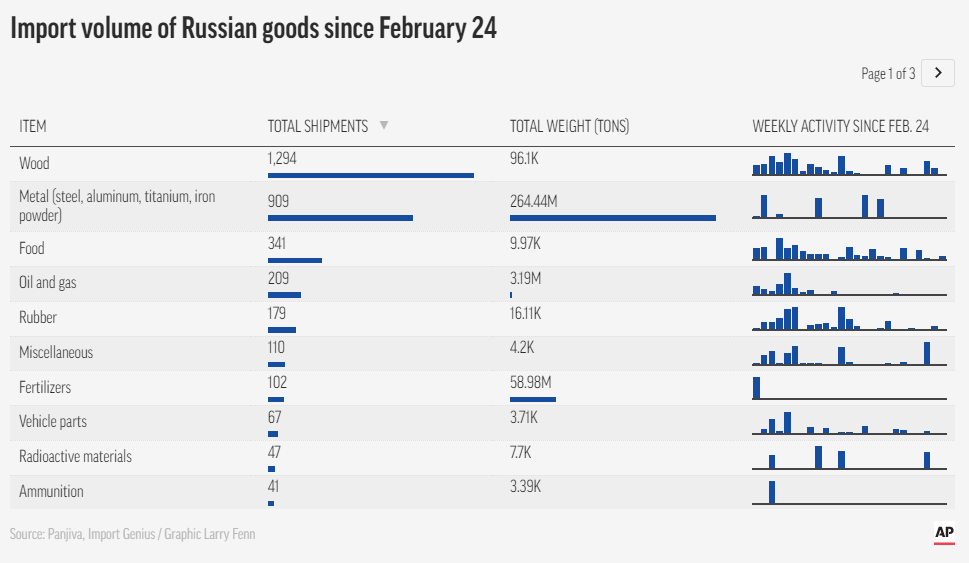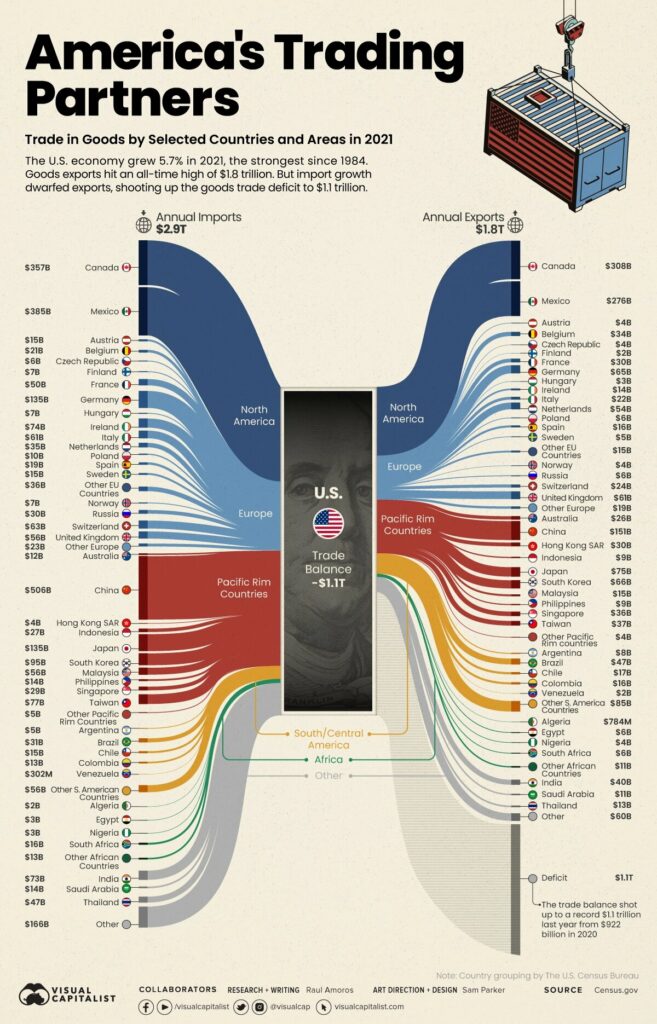“The warm war”: the trade between the USA and russia

Every month the goods worth more than 1 billion dollars are sent from russia to the US. How can russia use this money and why trading with the USA does not guarantee further economical stability of the terrorist state?
Even after half a year of war in Ukraine the United States continue to import the goods from russian federation. In accordance with the investigation of Associated Press, the trading volume is about 1 billion dollars per month.
For the past half a year more than 3 600 batches of timber, metals, rubber, radioactive materials and other goods arrived to the US ports. This index is lower, than the one for the same period last year, but even now the trading volume reaches significant amounts.
Also, almost every day, containers with cereals, shoes, cryptocurrency mining equipment and even pillows arrive at American ports.
The analysis of goods imported from russia showed that some of them are transported legally, for example, fertilizers. Sanctioned oil and gas were also delivered to the US ports, as companies fulfilled pre-war contracts.

But in some cases, it is difficult to determine the origin of products exported from russian ports. US energy companies continue to import oil from Kazakhstan through russian ports, even though that the oil is sometimes mixed with russian oil. Trade experts warn that russian suppliers are unreliable, and because of the opaque corporate structures of most large russian companies, it is difficult to determine whether they are connected to the government.
“It’s a general rule: when you have sanctions, you’re going to have all kinds of shady schemes and illegal trade,” says economist Konstantin Sonin, who teaches at the University of Chicago. “Still, sanctions make sense: even if you can’t kill 100% of revenue, you can reduce it.”
The investigation notes, that a ban on the import of certain goods from russia could cause more damage to the United States than to the terrorist country. For example, russia remains a key exporter of metals, and a trade freeze could cause prices for Americans to rise. So, since February, the USA has received from russia about 900 deliveries of metals with a total weight of 264 million tons.
“The basic idea of sanctions is that you try to act in such a way as to cause more pain to the other party and less pain to yourself,” comments Jacob Nell, an economist at the American financial conglomerate Morgan Stanley.
Russia is not even among the ten largest trading partners of the United States. During the last two years, the USA ranked third (6%) among the main exporters of goods and services to russia, after Germany and China. This indicates, rather, russia’s dependence on such a trading partner as the United States, rather than the other way around. Russia even has to hide the origin of at least a third of goods imported from the USA.

Before the start of the full-scale war in Ukraine, russia supplied the US mainly with petroleum products, platinum and raw oil. Meanwhile, the aggressor country itself bought machines, equipment, and apparatus, as well as chemical industry products, transport, tools, metals, and food products from the United States, and this is only a part of the russian federation’s imports.
The volume of trade between the USA and the russian federation remains high for Ukrainians, who know the price of russian missiles and other weapons with which russia commits war crimes in Ukraine.
However, it is important to look at the annual dynamics of trade. According to the OEC, in the period from June 2021 to June 2022, United States exports to russia decreased by $480 million (-89.2%) — from $538 million to $58 million. Imports of russian products to the USA decreased by $2.06 billion (at least according to official data).
So, the USA continues to buy russian goods, but has significantly reduced the sale of its own ones. Currently, russia exports mainly vaccines, blood, antisera, orthopedic devices, medical instruments, medicine and food products from the United States. Such goods fall under the category of humanitarian goods, the export of which is not yet planned to be refused from in the USA and Europe.
So, the gas station country supplies its products to the USA and receives money for it, but it cannot spend it on buying goods from abroad in the usual volumes. This affects the devaluation of the ruble, which the russian Central Bank has been trying to slow down and hide for six months. In addition, the reduction of import routes forces russia to bypass sanctions and look for new sales markets in third world countries, where the quality of products may be significantly lower than that of russia’s former trading partners. As a result, the aggressor country receives an additional “headache”, and this trend will persist and deepen in the future.





